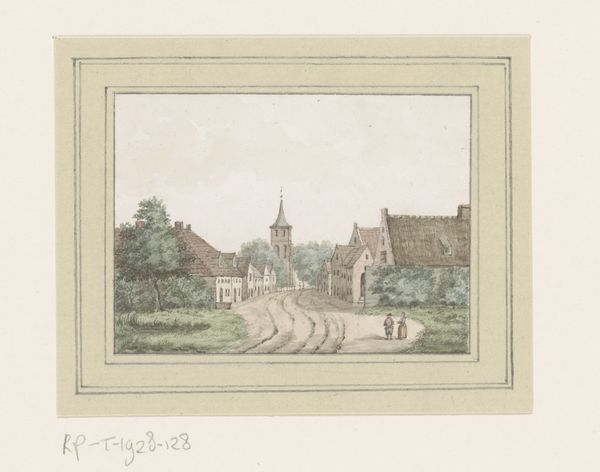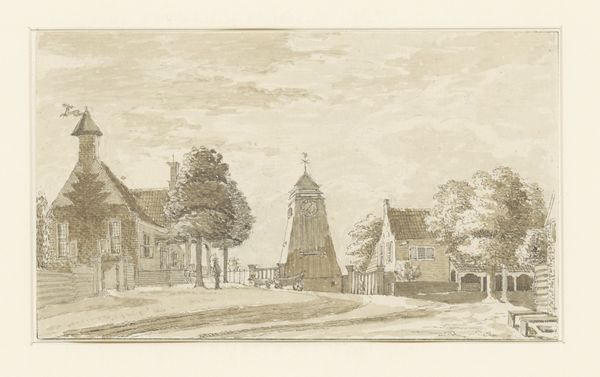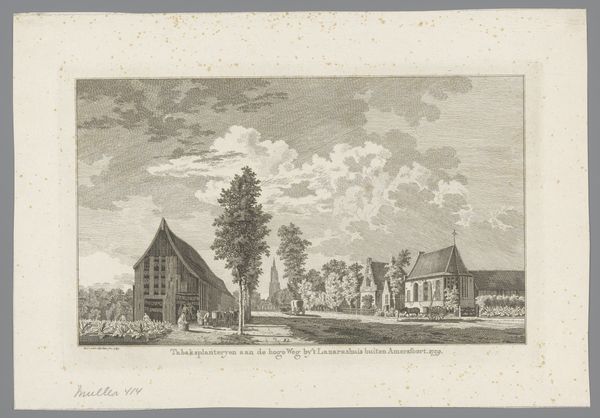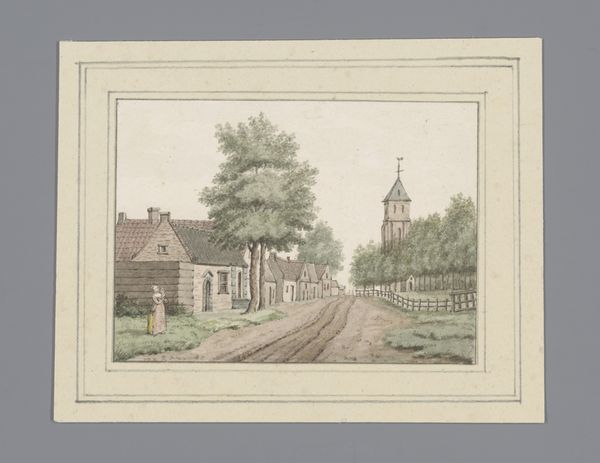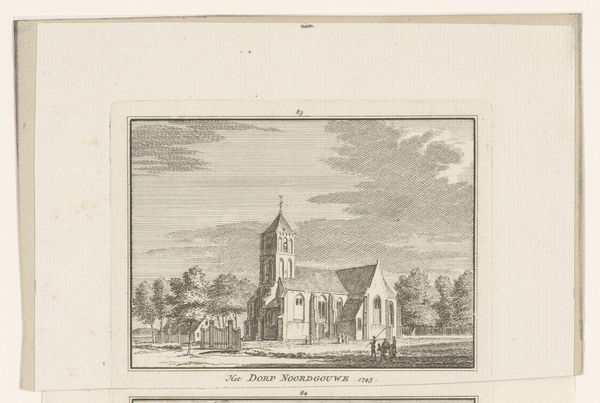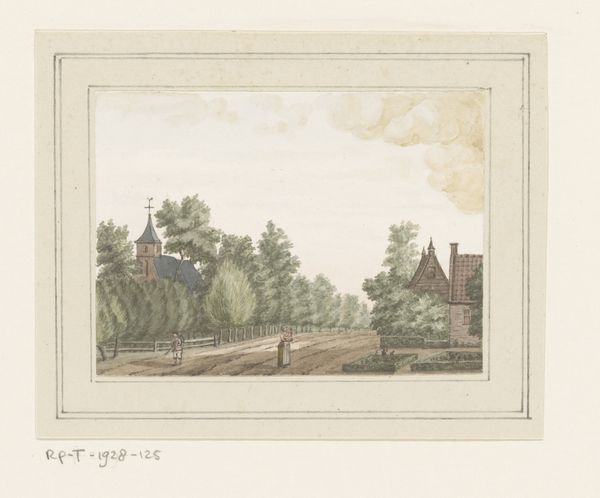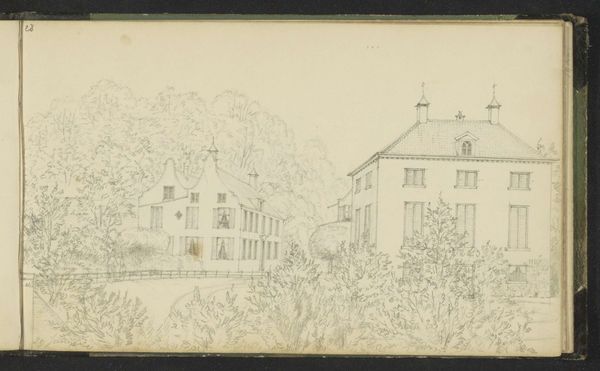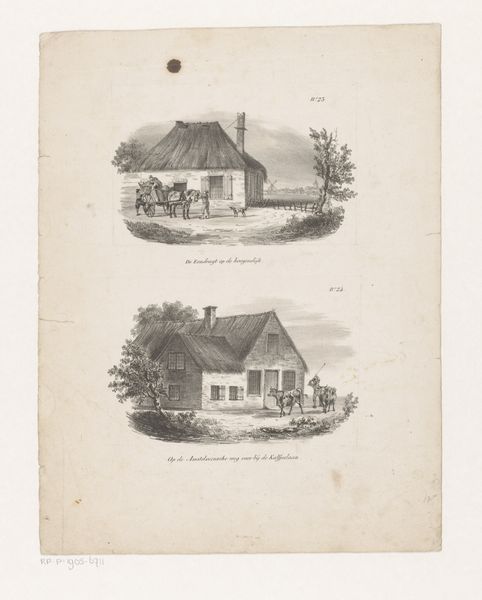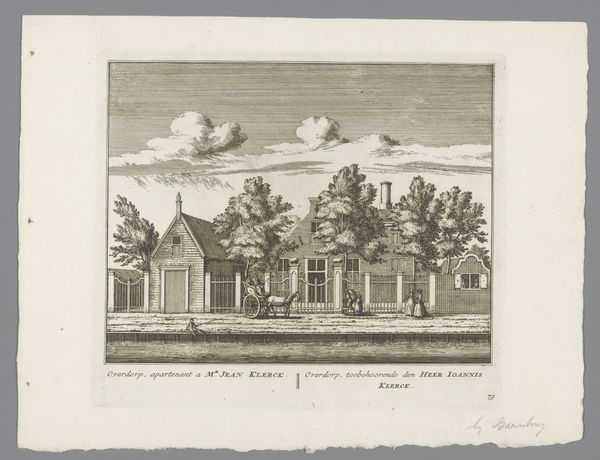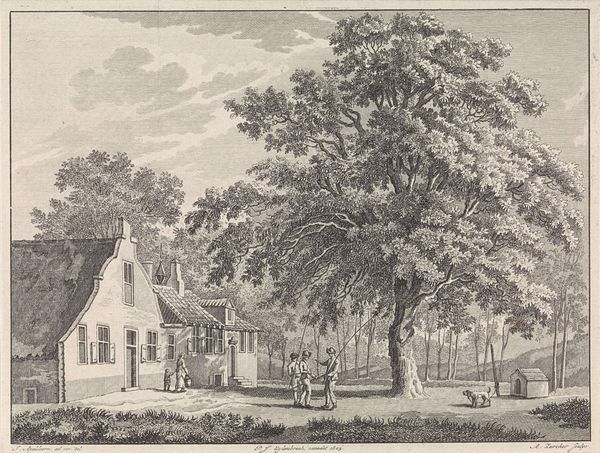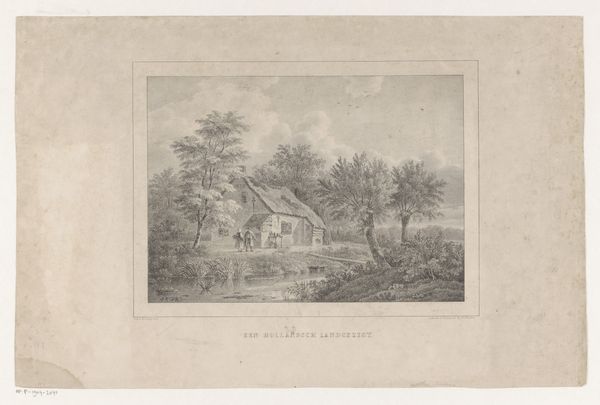
painting, watercolor
#
painting
#
landscape
#
watercolor
#
cityscape
#
genre-painting
#
realism
Dimensions: height 228 mm, width 262 mm
Copyright: Rijks Museum: Open Domain
Curator: Let's discuss Carel Christiaan Antony Last's watercolor, "Figuren komen aanvliegen in een leeskabinet," created sometime between 1857 and 1876. Editor: Instantly, I’m drawn in by its peacefulness. There’s a gentle quality in the soft colors, almost like a dream of a quiet, rural space. Curator: The delicate use of watercolor is noteworthy, providing a contrast to typical notions about the value assigned to such modest mediums during the rise of industrial art production. Last was able to achieve realistic landscape and genre elements while using easily acquired material. Editor: It feels deliberately understated, doesn't it? There's someone on horseback and another with what looks like a small cart, but everything seems secondary to the church-like structure in the middle. There are also, dare I say, almost childish figures scattered around the grassy foreground... It's like peeking into someone's memory of a town scene. Curator: True, and in exploring genre and cityscape scenes within the tradition of realism, Last captured elements from daily life. Notice how labor is pictured? A simple structure, surrounded by pastoral markers; all this reinforces ideas related to labor being foundational. Editor: Yes, now that you point that out! There's this tension. The idyllic setting—trees, farm animals— juxtaposed with the figures seemingly working, which perhaps touches upon larger questions about how communities were maintained? The art highlights an era just as industrial modes began overshadowing many such rural settlements in Europe. Curator: Precisely, this aligns with trends within realism to illustrate ordinary moments, a snapshot of society amid the flux of progress. These are elements we consider as intrinsic building blocks for the socio-economic picture during the rise of modern economies and social structures. Editor: Looking again, I'm left with this wistful impression. Like seeing something beautiful just before it fades, perhaps signifying transition periods reflected across rural cultures during the time. Curator: An insightful interpretation! Thank you for helping enrich our viewers’ perspective regarding labor in Last’s painting. Editor: It’s been a pleasure digging beneath the artwork! Always an honor.
Comments
No comments
Be the first to comment and join the conversation on the ultimate creative platform.
